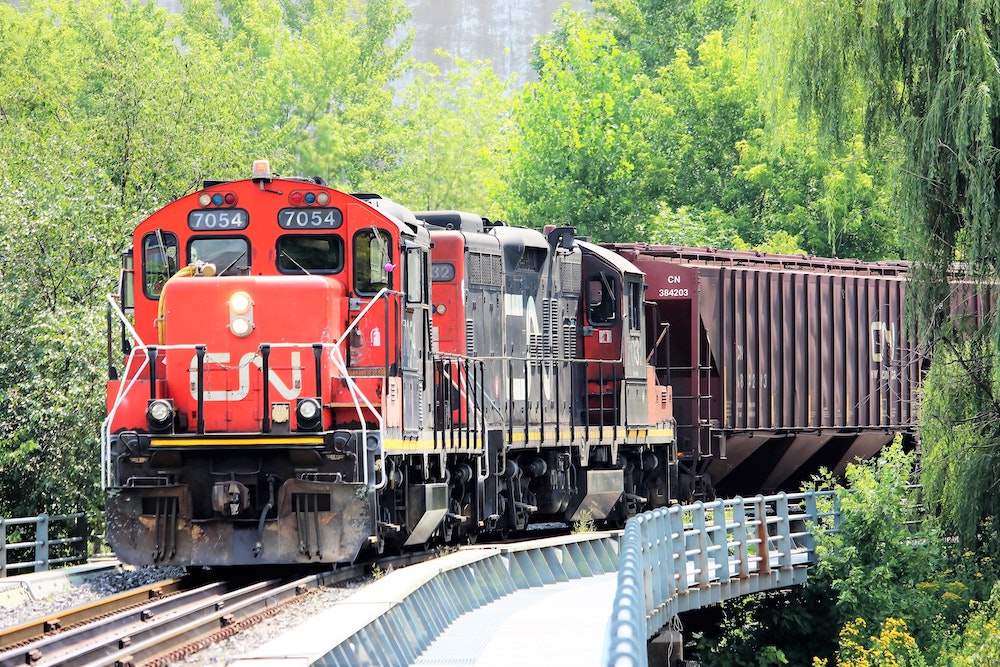A crisis was narrowly averted in the last few days as Congress put a halt to a potential rail workers strike that threatened the supply chain and shipping across the US. Although the world focuses more on global shipping by water, railroads are the primary method for transporting goods from ports to depots domestically, where trucks then deliver items to their final destinations. A rail workers strike would represent a huge supply-chain issue with major repercussions for the industry, companies, and the economy.
Government Intervention Averts Rail Workers Strike
As we turned the calendar from November to December, President Biden signed a measure that legally binds rail workers and railroad companies to follow a proposed settlement initially drawn up in September. This act will avoid a potential rail workers strike slated to take effect this month, which would affect freight rail and possibly even passenger rail travel, since many passenger trains use freight railways. Effectively, this bill makes a strike illegal.
The president signed the initiative that had previously been approved by both the Senate and House, stating that the action avoided the loss of nearly 750,000 jobs, which could have halted the supply chain in the US. The envy of the rest of the world, our nationwide rail system covers 140,000 miles and accounts for nearly 30% of internal transport of goods. Biden also predicted a rail workers strike could result in an immediate economic recession if one of the major methods of transportation grinds to a stop.
Reasons Behind the Strike
This year has been a tumultuous one for the rail industry. In September 2022, the government stepped in to help broker a deal between railroad companies and the unions that represent rail workers to avoid a strike at that time. Twelve unions were involved, and for the deal to move forward, all 12 would have needed to accept the terms of the negotiation. However, only eight voted in favor, leaving room for a strike to happen.
The September agreement included a 24% pay increase across five years (which is retroactive to 2020), added up to three days’ unpaid leave for medical appointments, and put a cap on health insurance costs. The areas that haven’t yet been resolved include providing paid sick leave as well as more flexibility with time off and on-call hours.
Currently, rail workers face penalties for taking too many days off. With a drop in the workforce from 540,000 in 1980 to 130,000 today, railroad companies are left with skeleton crews, which is their reason for having such strict attendance policies.
Projections for the Future
With this new law in effect, a rail workers strike cannot take place unless striking workers are willing to break the law. While not the best outcome for employees who wanted to negotiate better benefits, avoiding a strike is good for the economy. It’s estimated that a rail workers strike could lead to a $2 billion loss daily—and grow the longer it continues. This during a time when inflation is higher than it’s been in more than 40 years.
The cost of the agreement could also be high as insiders believe many current employees may leave their positions. After all, there are plenty of jobs available that might provide workers with the benefits they desire. With the already minimal workforce in the industry, such a loss could have huge repercussions on the shipping supply chain. In fact, some companies are already switching to trucks to ship goods across the US in anticipation of future challenges with rail transportation. This includes tech companies that are shipping semiconductor chips. Stopgaps are also in place to ensure critical items, including chlorine for drinking water, are transported via alternative methods should a rail workers strike be imminent.
Stay in the Know with Cyclone Shipping
While much of the talk in the shipping industry for the last two years has centered around ocean liners, shipping container shortages, and port congestion, many domestic deliveries rely on rail transportation. With threats of a rail workers strike, alternatives must be considered to get products to consumers—especially with the holidays just weeks away.
That’s just one reason to trust your shipping needs to a freight forwarder. Cyclone Shipping stays abreast of upcoming news to ensure our clients’ deliveries get to their final destinations. If you’re ready to take shipping concerns off your to-do list, contact us; we’ll be sure to provide our famous white-glove service.




